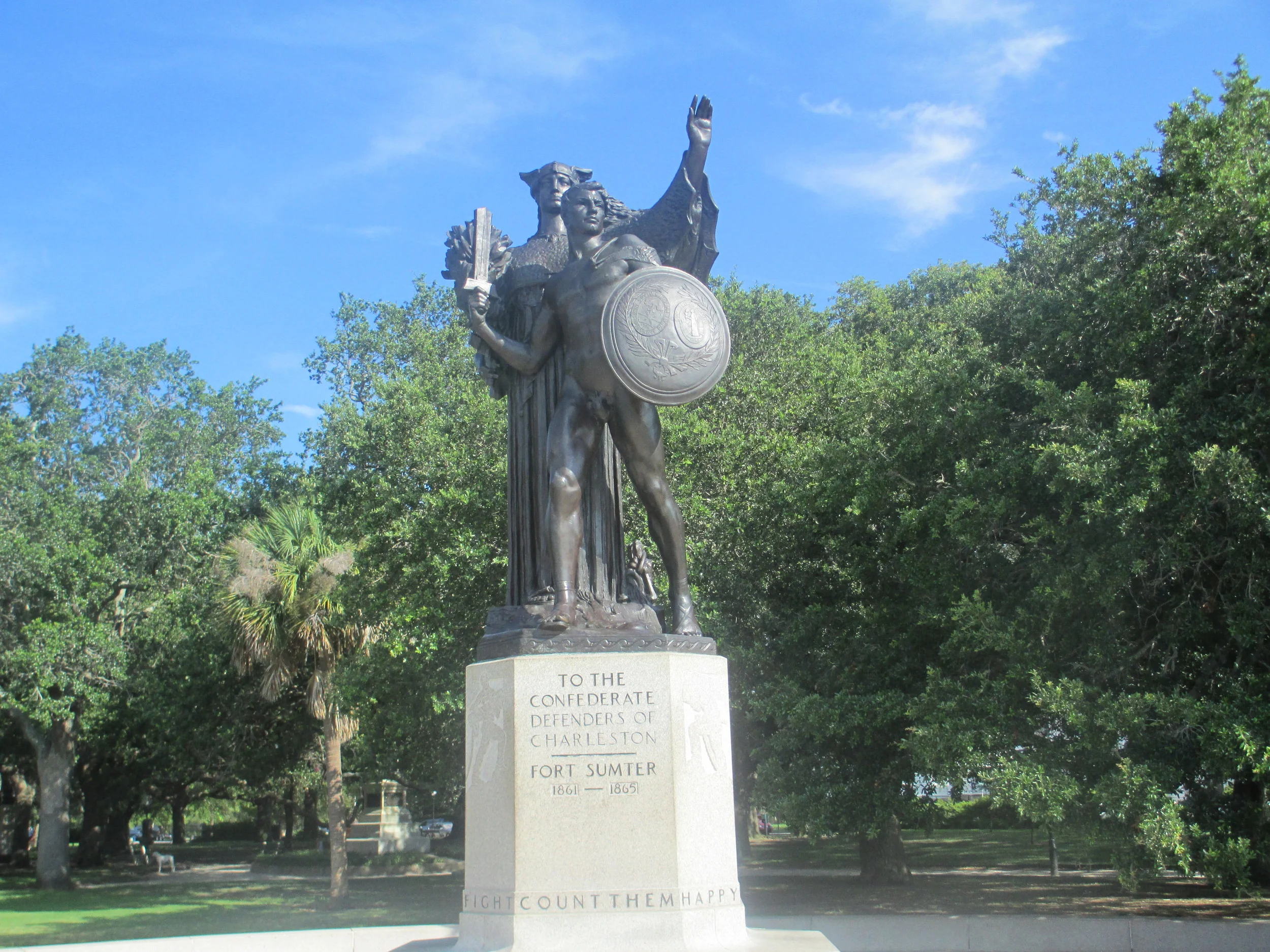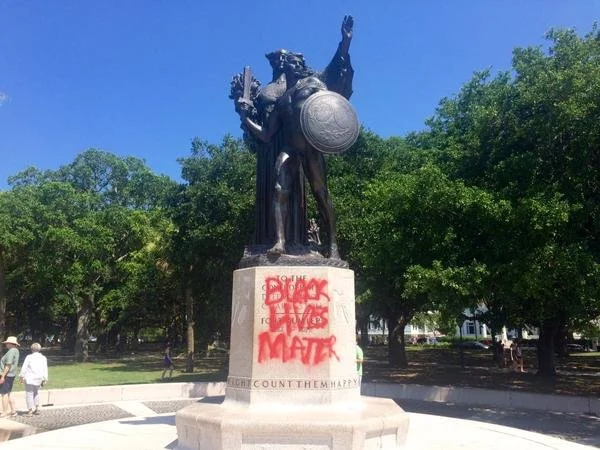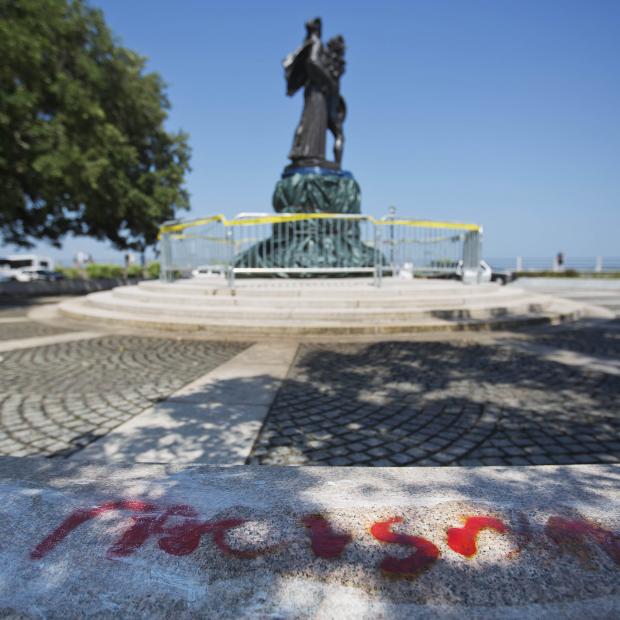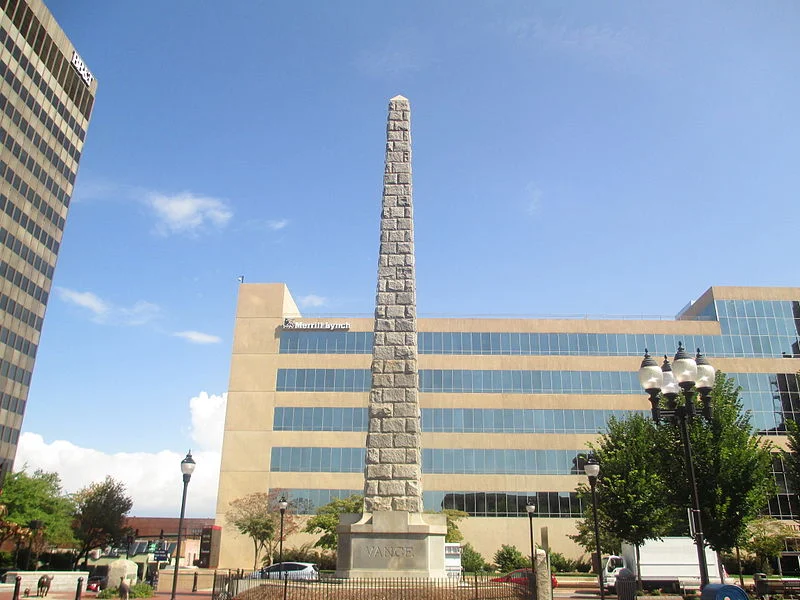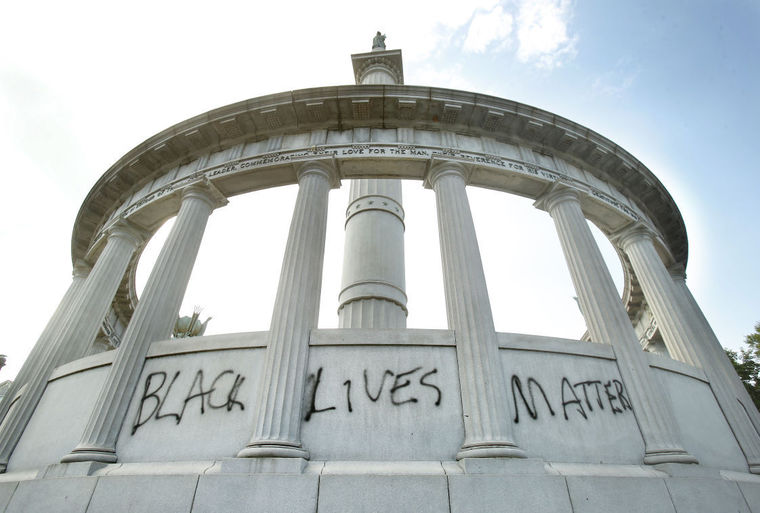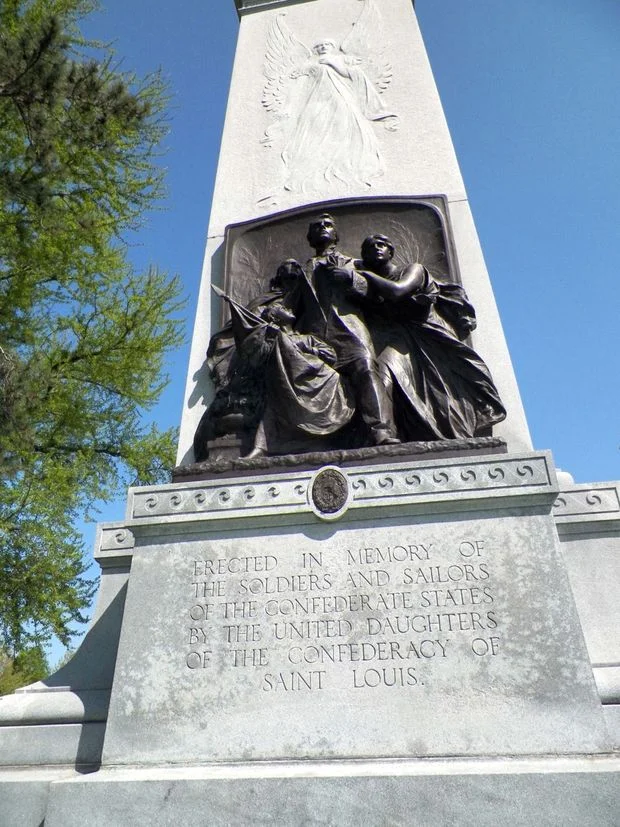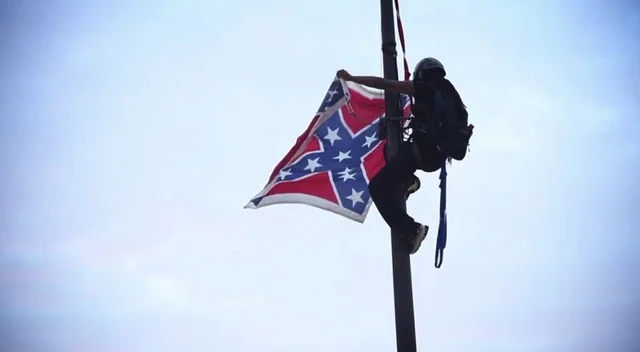Those who call the actions of Bree Newsome "heroic" aren't exaggerating. The artist, filmmaker and activist who pulled down the Confederate flag in front of the Charleston State House over the weekend was simply doing what has needed to be done for a long time. Some will call it illegal, but then, so were the actions of Rosa Parks and Harriet Tubman. It didn't make what they did any less justified. And in Newsome's case, it was both an act of protest and an act of art.
Bree Newsome's tearing down of the Confederate flag has to be placed in context. The broad context is, naturally, the renewed debate around what exactly the flag means and represents in the aftermath of the racist murders of Cynthia Marie Graham Hurd, Tywanza Sanders, Susie Jackson, Daniel Simmons, Clementa Pinckney, Ethel Lee Lance, Sharonda Coleman-Singleton, Depayne Middleton-Doctor and Myra Thompson at Emanuel African Methodist Episcopal church in mid-June.
Springing from that same renewed debate, and further situating Newsome's protest, is the wave of graffiti that has been visited on Confederate statues and memorials all across the United States. We here at Red Wedge categorically reject labeling these acts "vandalism," as many media outlets have. This rejection isn't just predicated on some sneering attitude toward the memory of the Confederacy, though we certainly do look at a state that seceded with the expressed intent of preserving slavery with deserved disdain. And yes, slavery was, beyond any reasonable contradiction, the central reason for the South's secession and the subsequent Civil War.
* * *
Click on thumbnail for larger image
Rather, we refuse to call these acts vandalism because we reject, on a basis that is both rational and political, the notion that the Confederacy deserves to be "honored" in any way. It is worth stepping back and asking what function it serves to preserve statues and monuments to the Confederacy, to Jefferson Davis or other enthusiastic defenders of slavery, in any modern urban area. What does it say, after the centuries of chattel slavery, the Civil War, the unfulfilled promises of Reconstruction and the institution of Jim Crow, that symbols such as these persist in public space?
There are two consecutive answers to this question. The first is that the logic of the Confederacy, which dictated that those of African descent are a lesser breed of human, persists; this much is obvious from the booming prison population, the horrifying continuation of racist police violence, and of course acts like the murders of nine Black people at Mother Emanuel, among them activists, state senators and artists. The second answer flows from the first: that if the logic of the Confederacy has evolved and lived on in mainstream society, then these monuments and memorials can only serve to remind us all that these public spaces are more for white people than anything else. That is a logic which no sane society should accept. The act of spray-painting "Black Lives Matter" on the sides of these monuments and statues cannot be vandalism anymore than the removal of "Whites Only" signs. These acts — be they graffito or the ripping down of the Confederate battle flag — though certainly crude and rushed, are undoubtedly acts of aesthetic resistance. They are brilliant in their defiance and worthy of our defense.
* * *
Click on thumbnail for larger image
And so we come to Bree Newsome's action. Newsome is, as mentioned above, already a notable and accomplished artist and filmmaker. Last April she spoke on a panel as part of the Octavia E. Butler Celebration of Arts and Activism at Spelman College. At the event she elaborated on what it means to be an artist and activist, tying the two together: "Essentially what that means to me is that I'm a person fighting for space and agency to give voice to what I'm seeing and experiencing... But when I think about it, I was always really an activist; I never really had a choice. Because, for as long as I can remember I became aware that simply being myself was an act of defiance. The space that exists for many of us, as a young Black girl, is so extremely limited that really can't go very far without being an activist, being in defiance of something."
It is telling that Newsome spoke in terms of physical space. She is, of course, right in pointing out that less of such space exists for women and people of color to openly express themselves. Her mention of it in relation to art and activism is also significant; both are in essence about the transformation of space. The raising of the Confederate battle flag, the erection of statues and memorials that hover over public areas honoring those who fought in defense of slavery; these are aesthetic acts that by their very nature tailor that space for the needs of a highly unjust power structure, molding and influencing the attitudes of those occupying it. Pushing back against this, seeking to reshape this space is not only justified, it's absolutely necessary. Newsome, along with James Tyson (the activist who was arrested with her) deserve our support and defense. As does anyone who dares to stand up and say, in whatever way they can, that our cities and towns should not belong to racism.
* * *
Click on thumbnail for larger image
Red Wedge relies on you! If you liked this piece then please consider donating to our annual fund drive!



